Author: Michael Nadeau
Translation: Baihua Blockchain
The post-pandemic era has been defined by fiscal dominance—a government deficit and short-term debt issuance-driven economy, where liquidity remains high even as the Federal Reserve maintains high interest rates.
Today, we are entering a phase dominated by the private sector, with the Treasury reclaiming liquidity through tariffs and spending restrictions compared to the previous administration.
This is why interest rates need to decline.
We analyze the current cycle through the lens of global liquidity to emphasize why this round of "devaluation trades" has reached its final stage.
Is Fiscal Dominance Coming to an End?
We always hope to "buy the dip" when everyone else is "chasing the rally."
This is why the recent discussions about "devaluation trades" have caught our attention.

Data: Google Trends
We believe the interest in "devaluation trades" peaked a few years ago. At that time, Bitcoin was priced at $25,000, and gold was at $2,000. Back then, no one was talking about it except for cryptocurrency and macro analysts.
In our view, this "trade" is essentially complete.
Therefore, our job is to understand the conditions that created it and whether those conditions will continue to exist.
What drove this trade? In our view, there are two main factors.
- Treasury Spending. During the Biden administration, we implemented massive fiscal deficits.
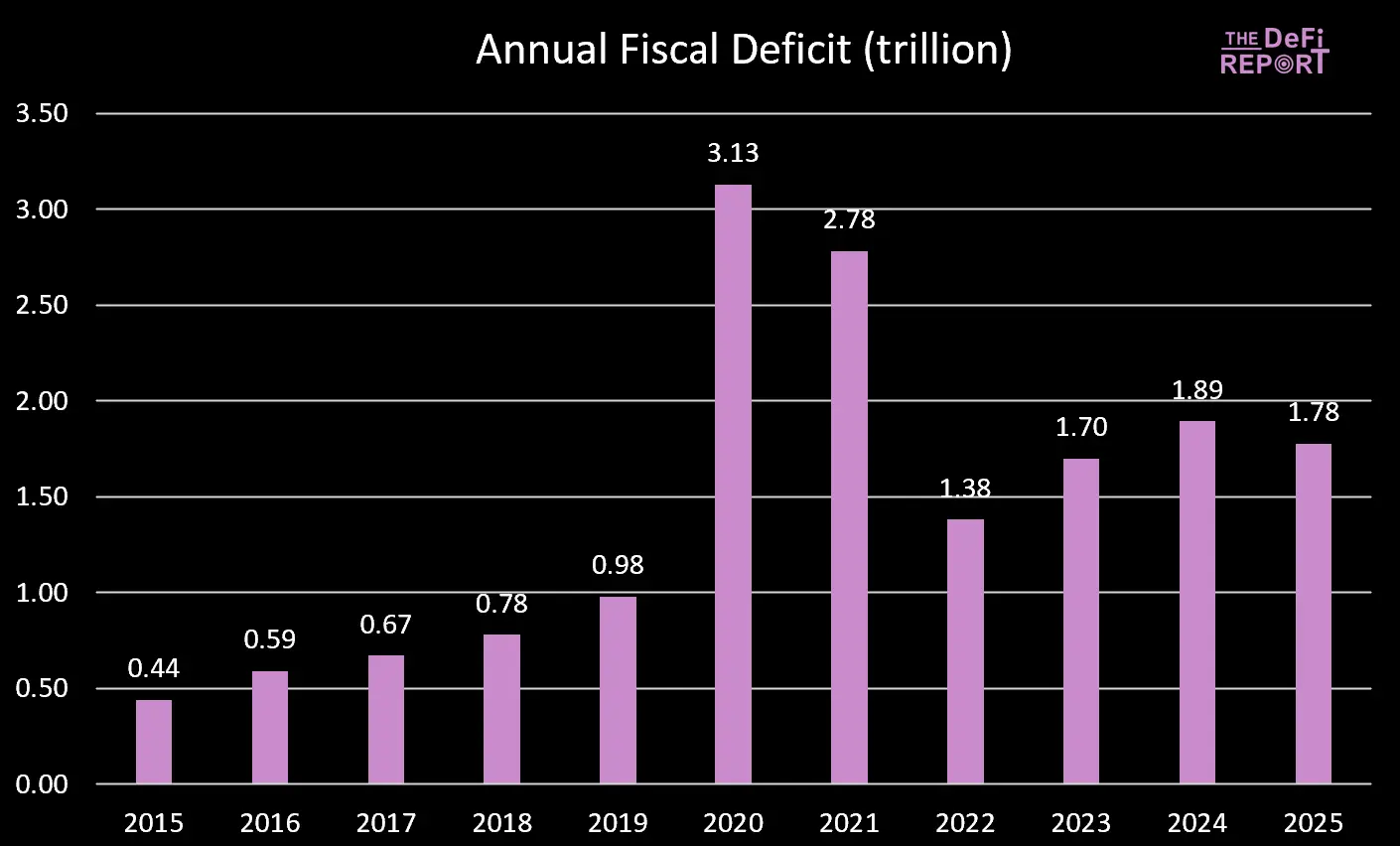
Data: US Treasury
The fiscal year 2025 has just ended, and the deficit has slightly decreased—primarily due to increased tax revenue (tariffs) rather than reduced spending. However, the "Big Beautiful Bill" is expected to achieve spending cuts by reducing benefits for Medicaid and the Supplemental Nutrition Assistance Program (SNAP).
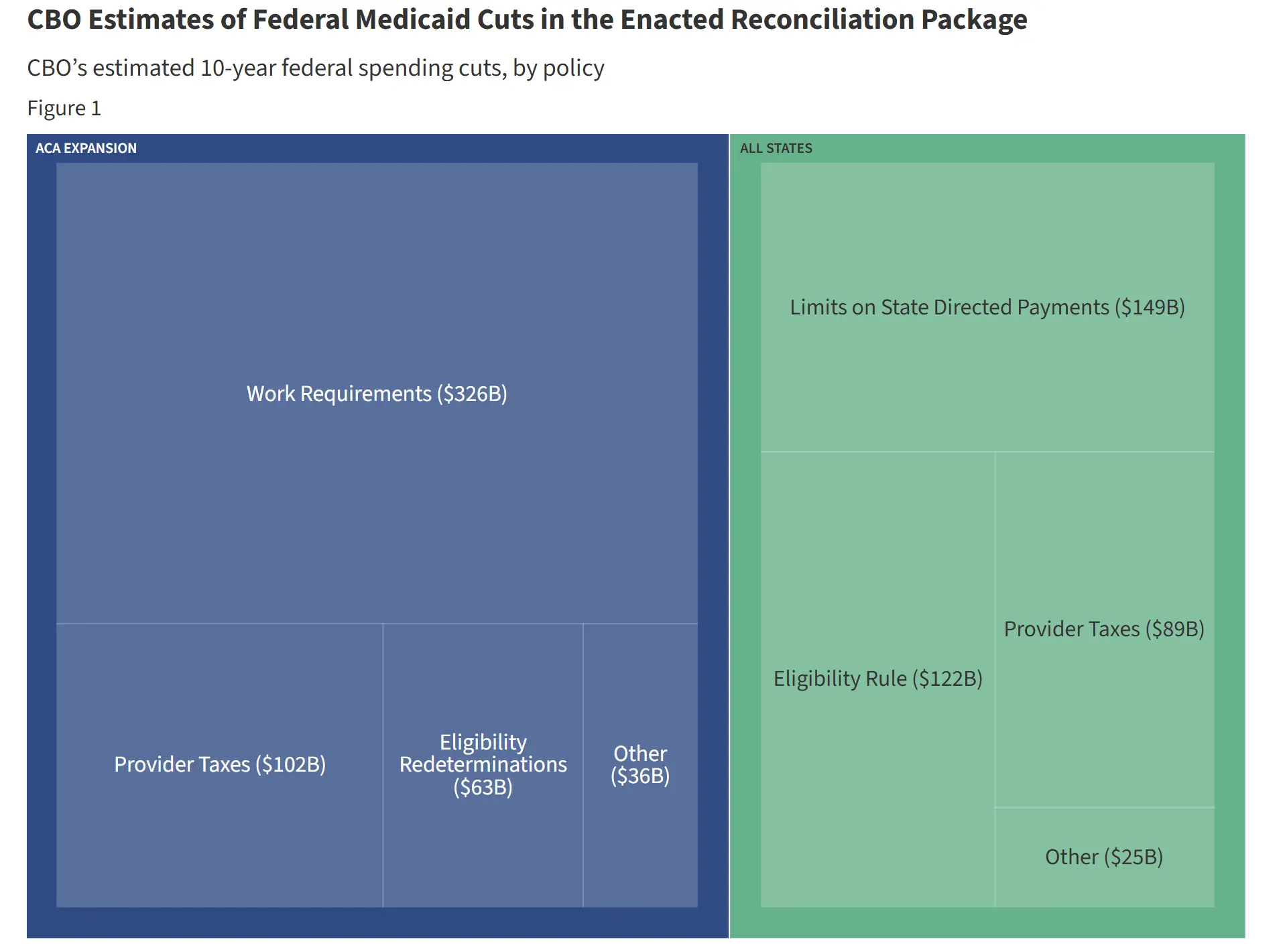
Data: KFF Comparison of Cuts to Current Spending Trajectory
During Biden's tenure, government spending and transfer payments continuously injected liquidity into the economy. But under the "Big Beautiful Bill," spending growth is slowing.
This means the funds the government is pushing into the economy are decreasing.
Additionally, the government is extracting funds from the economy through tariffs.
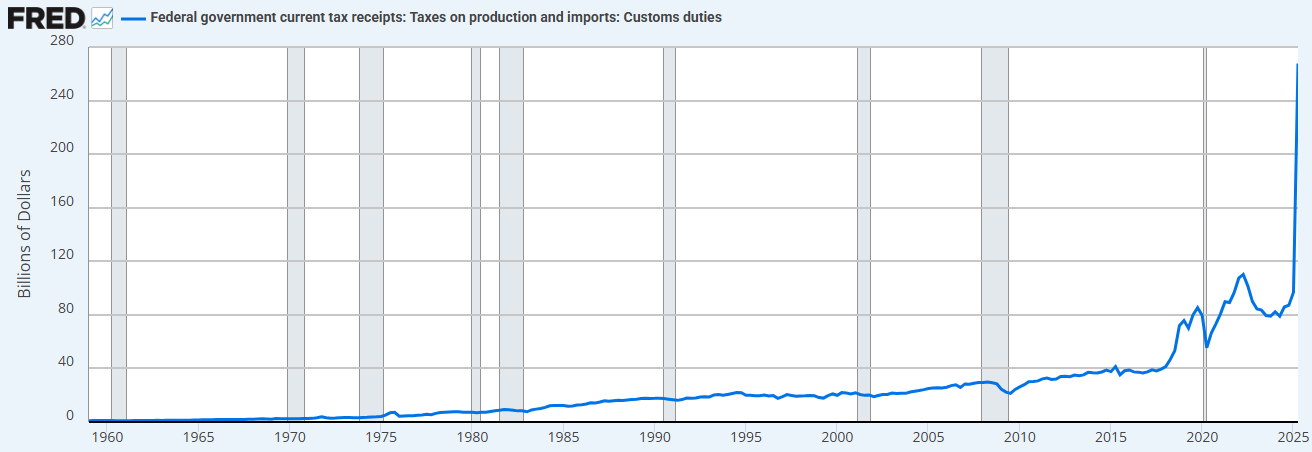
Data: FRED
The combination of spending restrictions (relative to the previous administration) and increased tariffs means the Treasury is now absorbing liquidity rather than supplying it.
This is why we need to lower interest rates.
"We will re-privatize the economy, revitalize the private sector, and shrink the government." - Scott Bessent
- "Treasury Quantitative Easing" (Treasury QE). To fund the excessive spending of the Treasury during the Biden administration, we have also seen a new form of "quantitative easing" (QE). We can observe this below (black line). "Treasury QE" funds government spending through short-term securities rather than long-term bonds, thereby supporting the market.
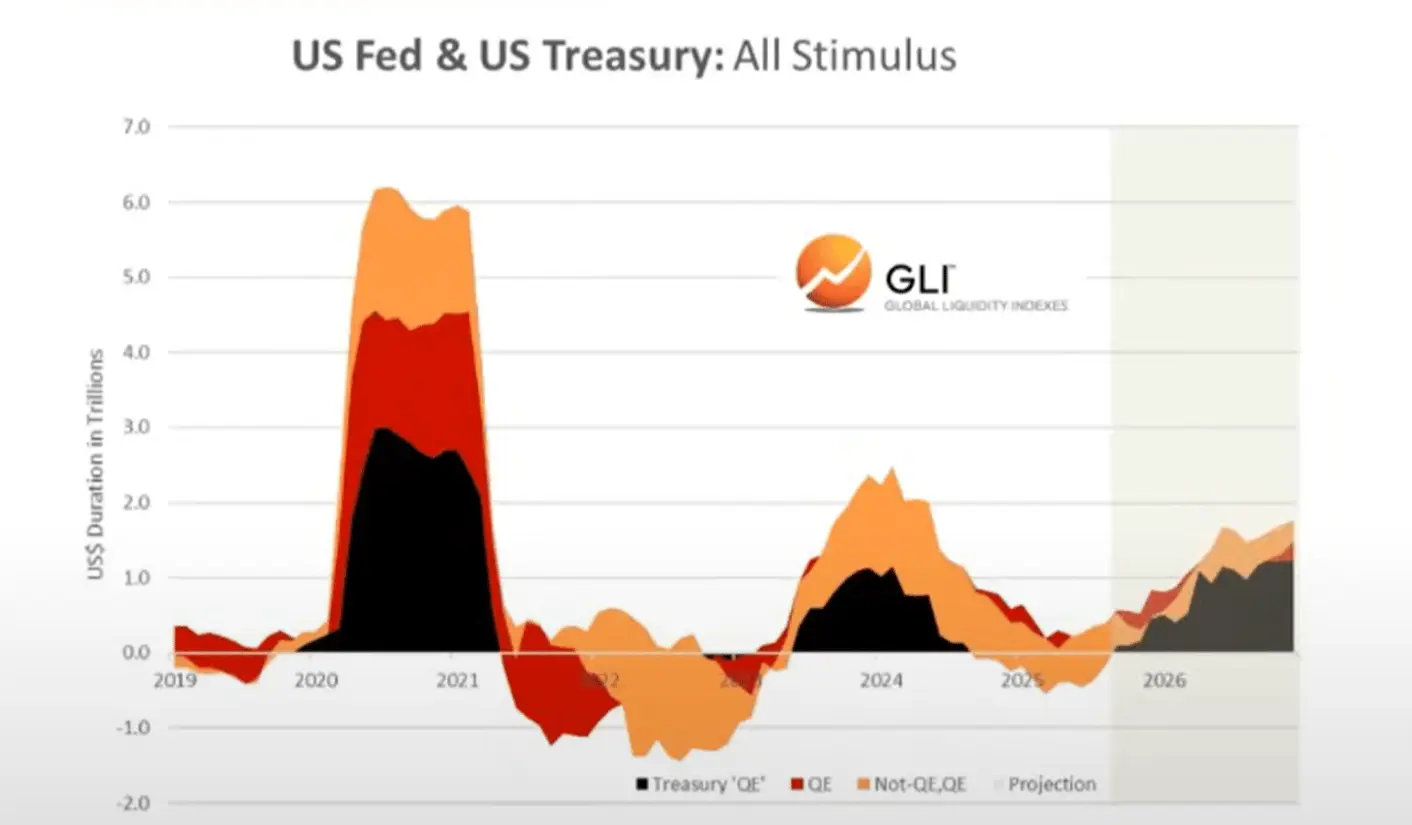
Data: Global Liquidity Index
We believe it is the combination of fiscal spending and Treasury quantitative easing that has driven the "devaluation trades" and the formation of the "everything bubble" we have seen over the past few years.
But now we are transitioning to a "Trump economy," with the private sector taking over the baton from the Treasury.
Similarly, this is also why they need to lower interest rates. To kickstart the private sector through bank loans.
As we enter this transition period, the global liquidity cycle seems to be peaking…
The Global Liquidity Cycle is Peaking and Receding
Current Cycle vs. Average Cycle
Below, we can observe a comparison of the current cycle (red line) with the historical average cycle (gray line) since 1970.
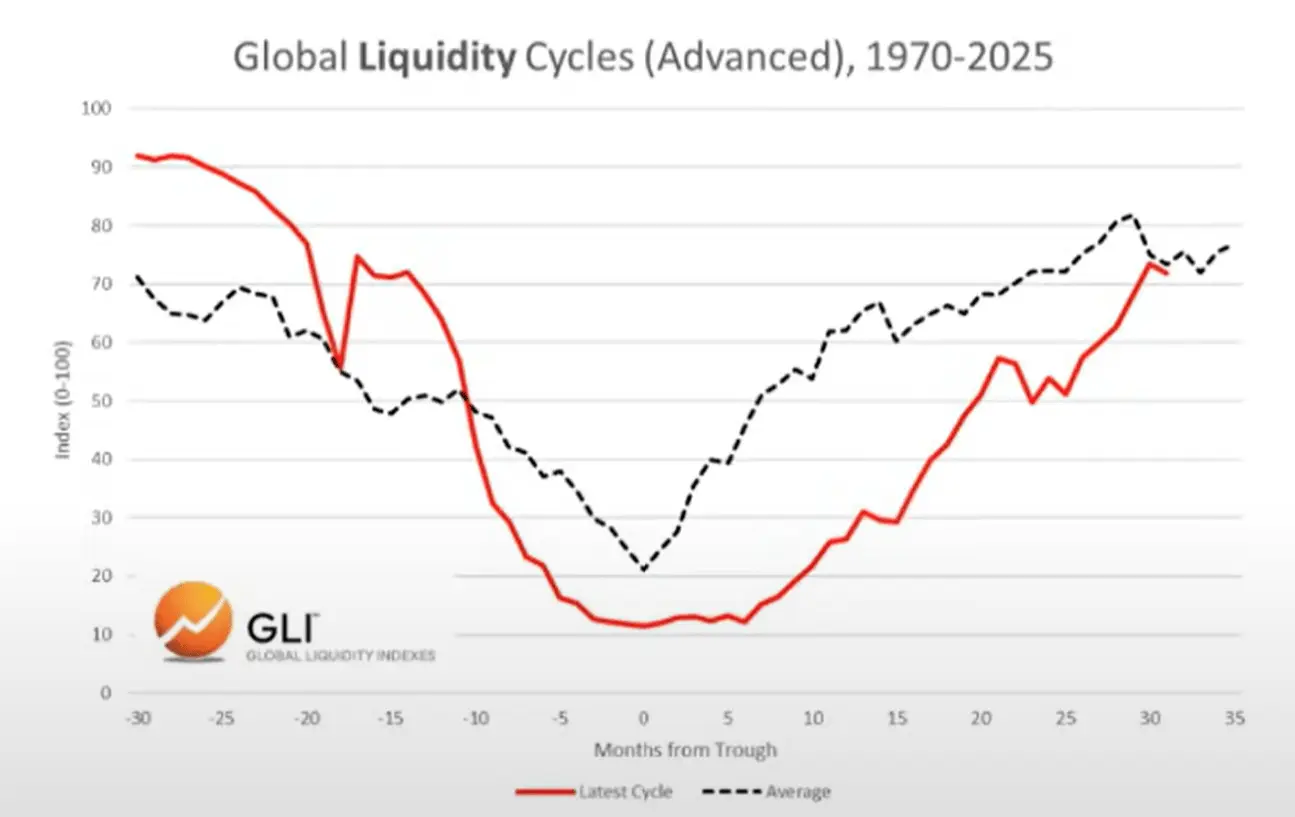
Data: Global Liquidity Index
Asset Allocation
Based on Mr. Howell's work on the Global Liquidity Index, we can observe the typical liquidity cycle and its fit with asset allocation.
Commodities tend to be the last assets to decline, which is exactly what we are seeing today (gold, silver, copper, palladium).
From this perspective, the current cycle looks very typical.

Data: Global Liquidity Index
So, if liquidity is indeed peaking, we expect investors to rotate into cash and bonds as the environment changes. It is important to clarify that this part of the process has not yet begun (the market remains "risk-on").
Debt and Liquidity
According to the Global Liquidity Index, the debt-to-liquidity ratio of major economies reached its lowest level since 1980 at the end of last year. It is now rising and is expected to continue to rise until 2026.

Data: Global Liquidity Index
The rising debt-to-liquidity ratio makes servicing the trillions of dollars in outstanding debt that needs refinancing more difficult.
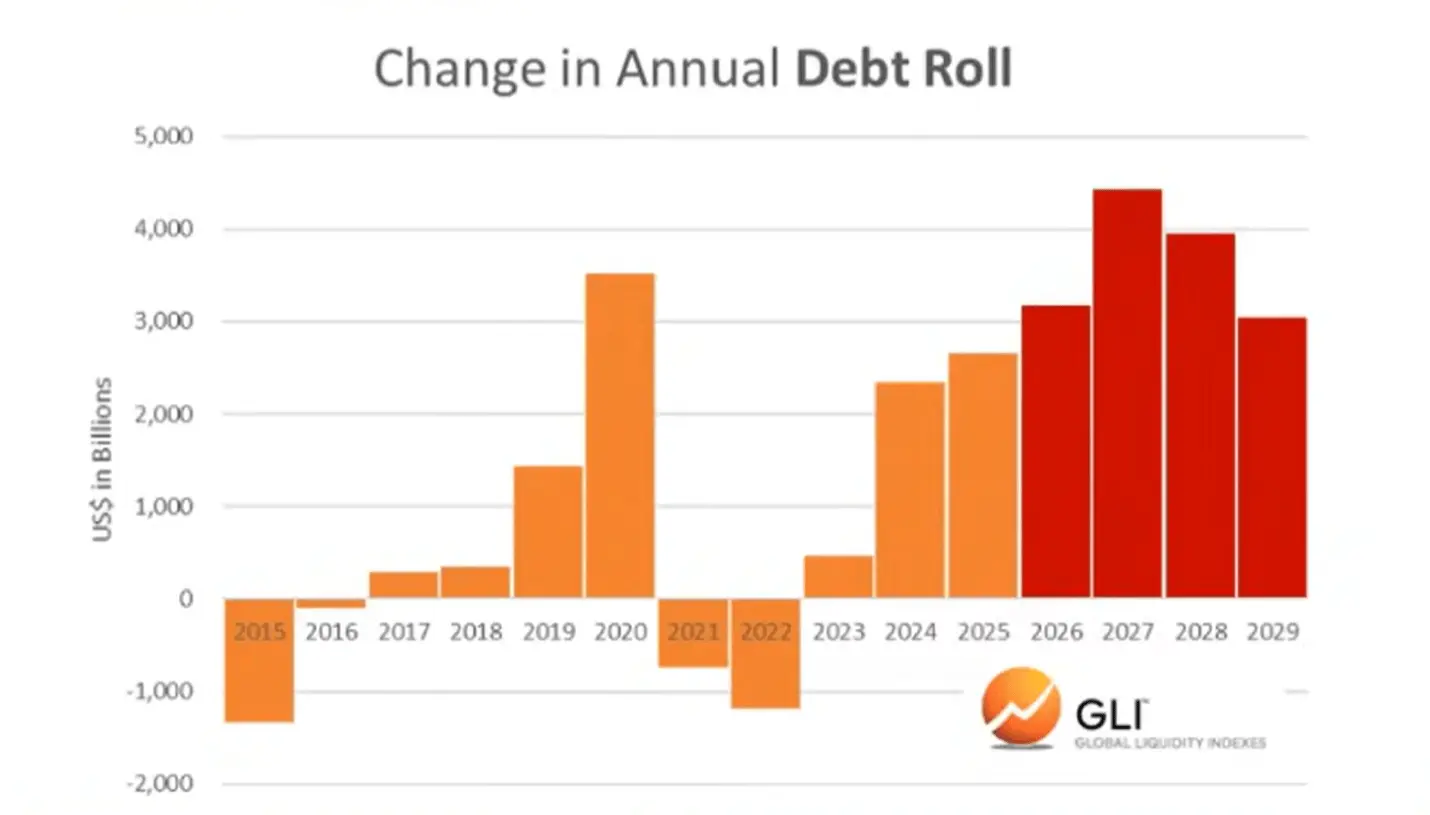
Data: Global Liquidity Index
Bitcoin and Global Liquidity
Of course, Bitcoin has "predicted" the peaks of global liquidity in the past two cycles. In other words, Bitcoin peaked a few months before liquidity peaked, seemingly anticipating the subsequent decline.
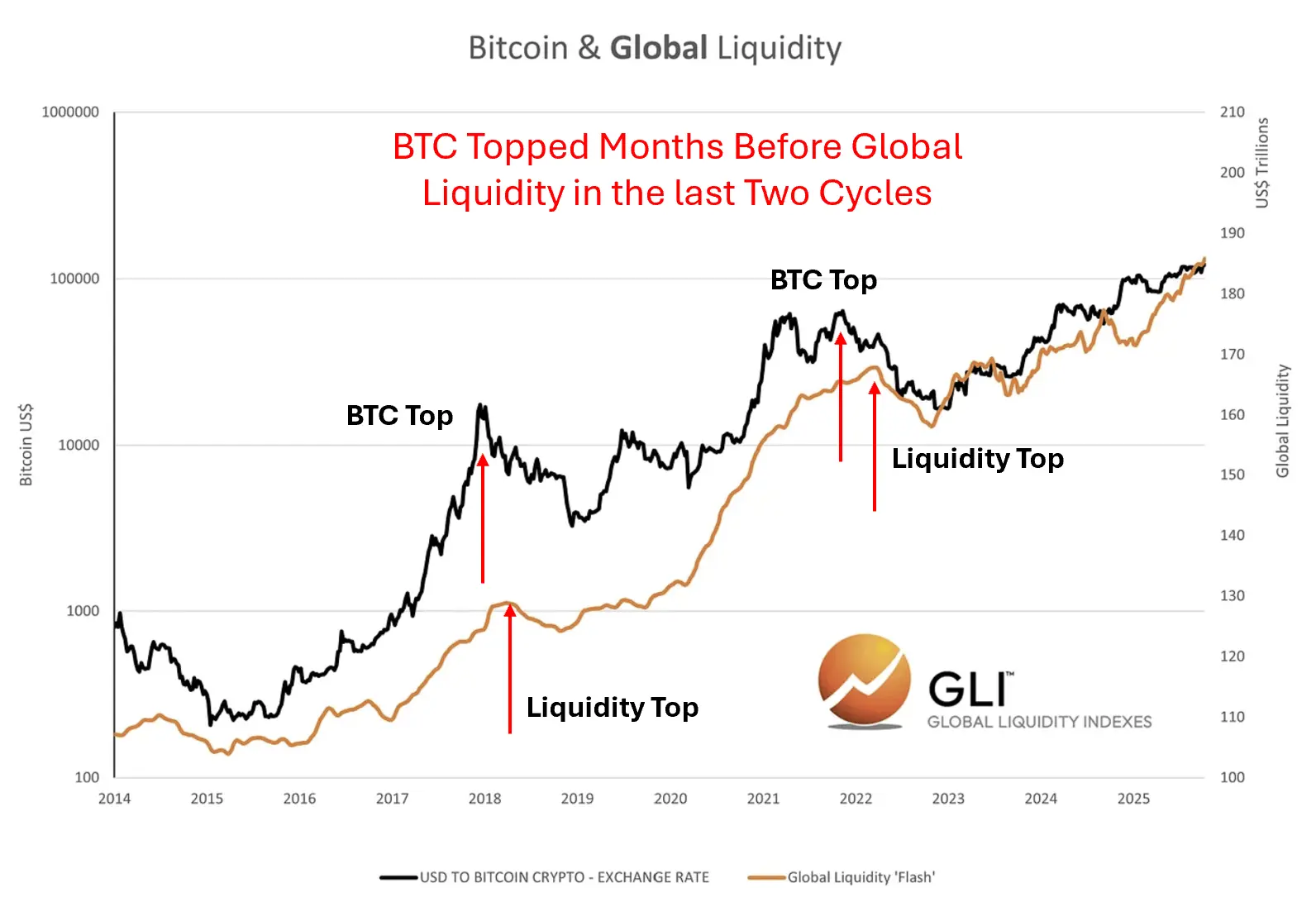
Data: Global Liquidity Index
We do not know if this is happening now. But we do know that cryptocurrency cycles have always closely followed liquidity cycles.
Fit with Cryptocurrency Cycles
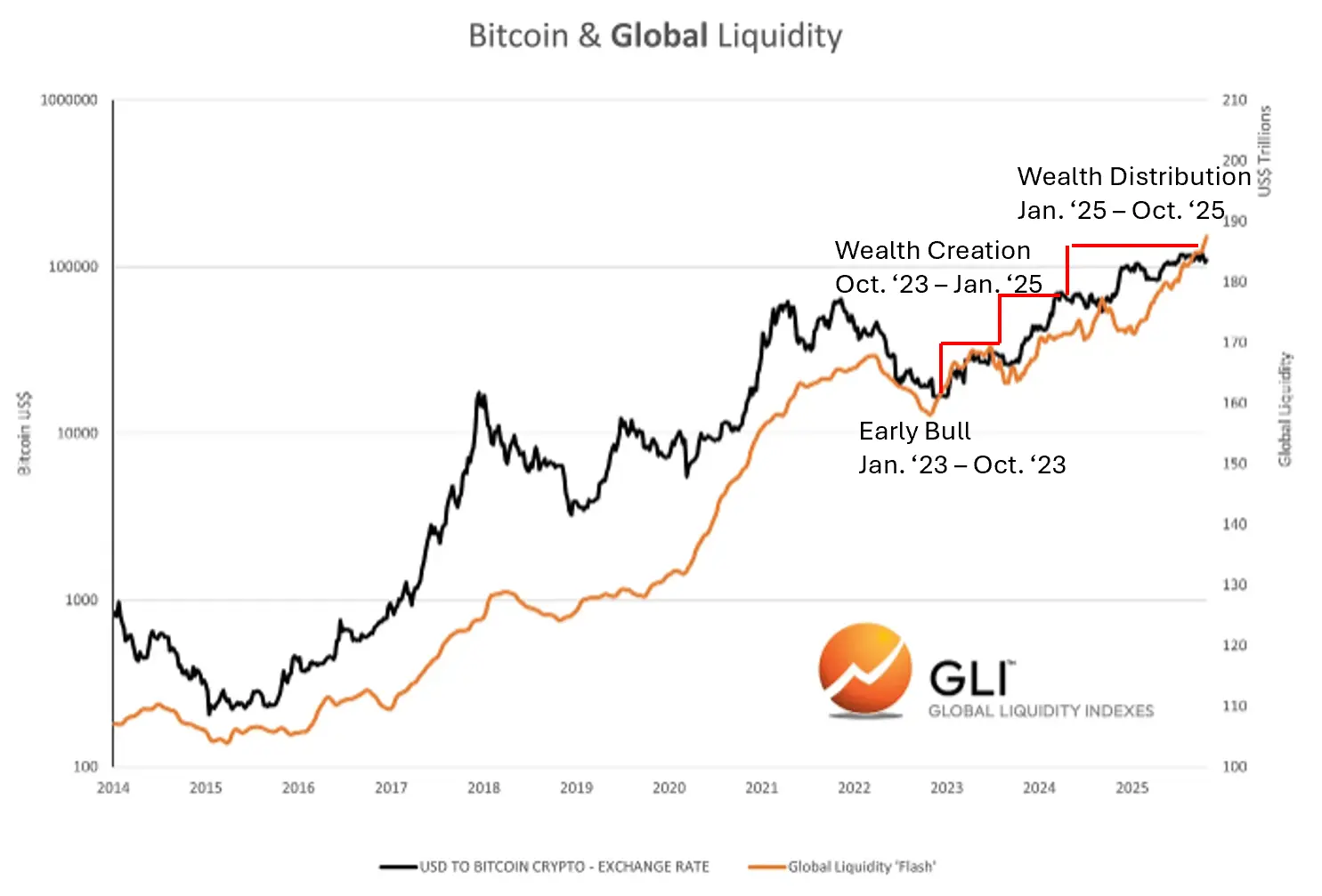
Data: Global Liquidity Index
免责声明:本文章仅代表作者个人观点,不代表本平台的立场和观点。本文章仅供信息分享,不构成对任何人的任何投资建议。用户与作者之间的任何争议,与本平台无关。如网页中刊载的文章或图片涉及侵权,请提供相关的权利证明和身份证明发送邮件到support@aicoin.com,本平台相关工作人员将会进行核查。




